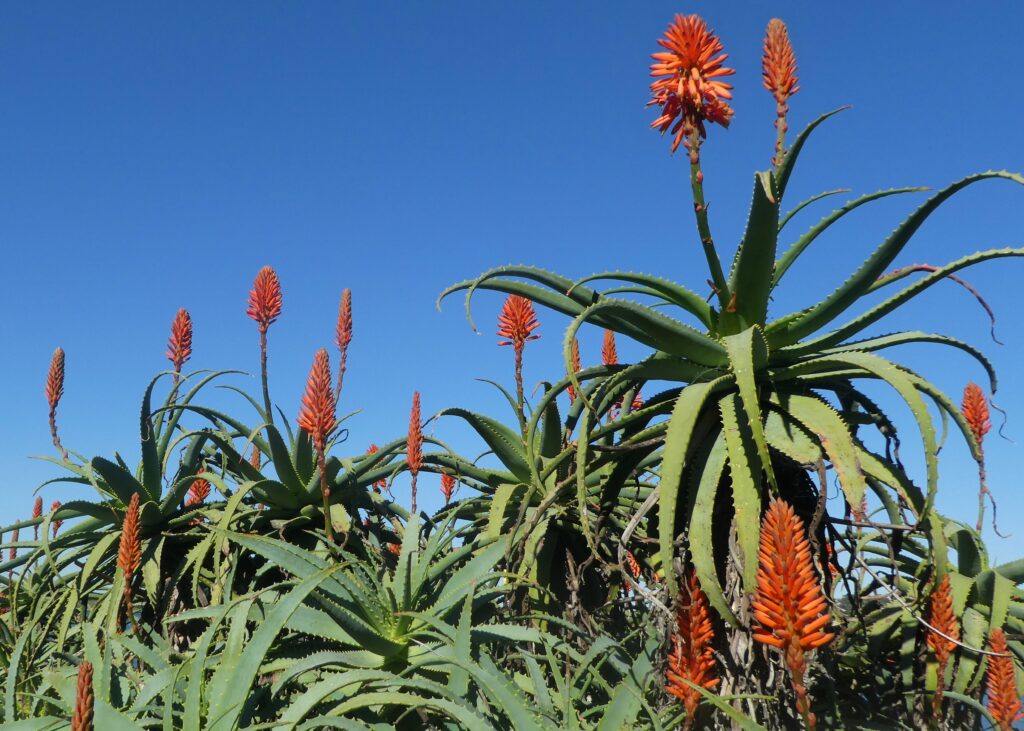Summary of Effects of Fertilization, Arbuscular Mycorrhiza, and Salinity on Growth, Yield, and Bioactive Compounds of Two Aloe Species
Fertilization Mycorrhiza and Salinity Effects on Aloe Growth and Bioactive Compounds
Three comprehensive greenhouse experiments investigated the fertilization mycorrhiza and salinity effects on two Aloe species: Aloe arborescens and Aloe barbadensis. Plants were grown under varying organic fertilization levels (standard vs. reduced), with or without arbuscular mycorrhizal (AM) fungi inoculation, and under low (1 mM) or high (80 mM) salinity conditions. The study focused on plant growth, leaf yield, mineral composition, and nutraceutical quality, highlighting how these cultivation factors influence both productivity and bioactive compound accumulation.
Fertilization Mycorrhiza and Plant Growth
Across all experiments, A. barbadensis consistently outperformed A. arborescens, producing 320%, 252%, and 72% higher fresh leaf yields, respectively. Increasing the fertilizer dose significantly enhanced plant height, leaf number, and overall biomass, demonstrating the critical role of fertilization in promoting growth. However, higher fertilization negatively affected certain bioactive compounds, indicating a trade-off between yield and phytochemical quality.
Mycorrhizal Inoculation Enhances Bioactive Compounds
Inoculation with AM fungi amplified several nutraceutical parameters. In A. barbadensis, AM fungi increased β-polysaccharide concentrations by 33%, while reduced fertilization combined with AM inoculation optimized aloin content. Antioxidant activity was highest in A. barbadensis regardless of fertilization level, emphasizing that fertilization mycorrhiza and salinity effects interact to shape both yield and phytochemical composition.
Salinity Effects on Leaf Quality and Composition
Elevated salinity reduced fresh leaf weight and total biomass in both Aloe species. Interestingly, salinity stress boosted specific bioactive compounds, increasing aloin by 66% and β-polysaccharides by 21%. These findings suggest that controlled salinity, along with fertilization and mycorrhizal inoculation, can strategically improve the phytochemical profile of Aloe leaves without compromising overall growth excessively.
Practical Implications
The study demonstrates that integrated management of fertilization, AM fungi inoculation, and irrigation with saline water can optimize both yield and nutraceutical content. Growers can leverage fertilization mycorrhiza and salinity effects to produce Aloe with higher antioxidant activity, elevated aloin levels, and enhanced β-polysaccharides, making these cultural practices essential tools for maximizing crop quality and functional value.
Publication: Hortscience









